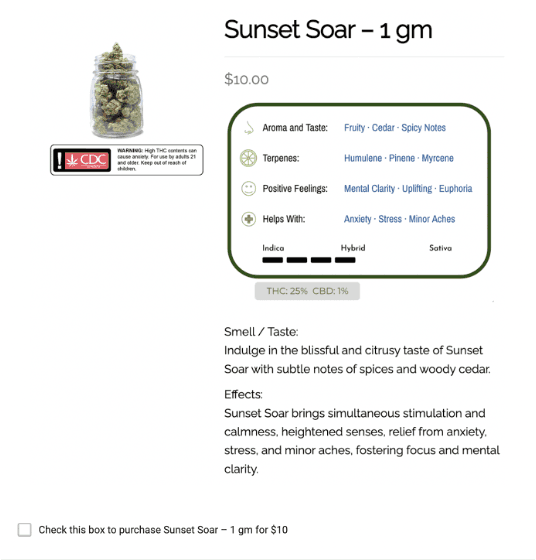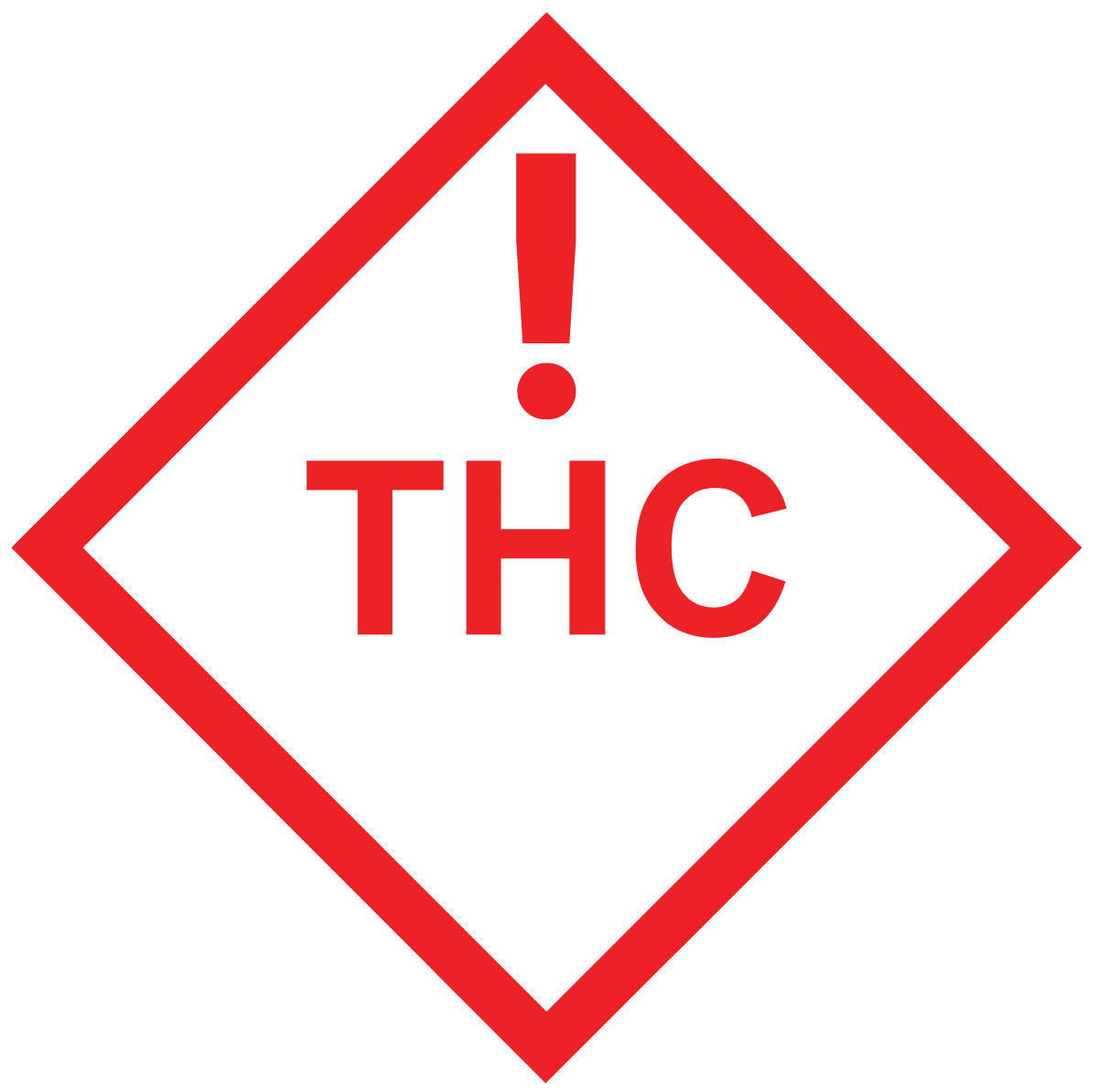Deliverables
Timeline
Tools
Roles & Skillsets
Team
Key insights & recommendations for stakeholders at Dartmouth’s Geisel School of Medicine
UX Research
Study design
AB Testing
Project Management
1 stakeholder
2 UX researchers
(separate projects)
3.5 weeks
Photoshop
Google Suite
BACKGROUND
STUDY DESIGN
INSIGHTS
CHALLENGES
TAKEAWAYS
01 Can popular product names change cannabis purchase behavior?
02 Can displaying warning labels only on high-risk products increase the warning’s perceived credibility and reduce purchases of high-risk products?
03 Can descriptions involving mental health change cannabis purchase behavior?
My goal as a UX researcher was to help Dr. Borodovsky understand what, exactly, are the best warning label designs to help measure this construct most efficiently
Secondary data was gathered via competitive analysis with Leafly.com & Dutchie.com.
Primary data was obtained through unmoderated surveys. Convenience sampling was used & centralized around Dartmouth undergraduate students. Participants were divided into one of four groups randomly.

02
03
04
Data analysis via independent samples t-test showed that this relationship is evident even when controlling for differences in number of survey respondents (shown above) and for respondents who haven’t used cannabis in the past 30 days





High-risk survey methods can make it difficult to determine the validity of insights. Extracting reliable insights from unmoderated surveys is inherently challenging, as there is no way of monitoring a respondent’s trustworthiness. Additionally, these surveys relied on convenience sampling around a particular demographic (Dartmouth undergrads). In order to curate insights & recommendations that provide value to stakeholders, it was important to be upfront about how sampling methods could have affected the results.
Testing purchasing habits using a Google form was clunky and unorthodox. One of my major concerns was whether this format could have disrupted results in a way that is difficult to ascertain. My study used a Google Form formatted to function like a mock online store. Such a format made the study accessible, but the user experience was still drastically different than a real online storefront. It was difficult to determine how, if at all, purchasing habits were different. One way I tried to understand this was by analyzing whether the study’s purchase distribution mirrored a real life distribution. If I were to utilize this format for something like this again, I probably would field respondent’s level of immersion with a question in the post-study part of the survey.
Data-driven insights generate the best recommendations. Even minor insights that are strongly backed by real-world findings are much more actionable than drastic insights that only weakly correlate with data.
Cognitive biases are EVERYWHERE. Making sure to anticipate known biases is crucial to good study design. In my case, asking some survey questions that weren’t as overtly related to the study topic was a good way to cover more ground and nip a few unforeseen correlations at the bud.
Communication is key. The value of certain insights might not be apparent if communicated ineffectively. It’s important to ensure that the presentation of points to stakeholders is clear and concise. By the same token, overselling insights to stakeholders can be dangerous, and typically does more harm than good. Striking that balance throughout this project was difficult but rewarding, and I owe it to mentors who helped me along the way in ensuring my language was precise and effective.
Dr. Jacob Borodovsky is working in partnership with the Geisel School of Medicine and the National Institutes of Health (NIH) to learn more about the landscape of online cannabis retail.
Through his research, Dr. Borodovsky hopes to understand three things:
Participants were presented with a simulated shopping experience - they were asked to choose from a list of six cannabis products. Products with above 25% THC content were displayed with warning labels.
Dr. Borodovsky and his team deemed the insights and recommendations I provided to them “extremely novel” and “extremely actionable.” Below is a breakdown of the findings.
Each of the four groups was shown a different label design to allow for analysis between groups.
However, all groups were given an identical post-test to gather more general insight.
There were a total of 50 anonymous participants.
01
Recommendation
Reinforce the presence of warning labels as much as possible in the actual study
Insight
A significant number of respondents didn’t read warning labels on cannabis products
Despite warning labels being shown at every phase during purchase, 44% of respondents indicated that they did NOT read the warning labels in the post-survey

Pre-purchase
Mid-purchase
Post-purchase
I recommended that the site should prompt users with high-contrast visual cues, pop-ups, and/or checkbox confirmations to increase the chance that they will read the labels as much as possible.
Insight
Labels from the CDC that specified anxiety as the effect had the most impact on participants
Recommendation
Warning labels in the actual study should use a similar design to test label credibility
Insight
Hypothetical spending habits in the survey appear to mirror real-world spending habits
Recommendation
Items on the site should more closely mirror real-world product selections & specifications.
At the same time, I found that participants who specified price as a highly-important factor for purchase choices did NOT differ in purchase habits from others, indicating that certain purchasing behaviors may not be reflected.
So I recommended that It may be worth exploring alternative product quantities in future iterations of the site, unless the study actually intends to mitigate such variation.
1 - Not at all important
2 - Somewhat important
3 - Moderately important
4 - Very important
5 - Extremely important
Recommendation
Stakeholders may want to consider the desirability of high-risk products across different demographics when analyzing results in their study
Although stakeholders hope to observe a decrease in purchases of high-risk products through the use of warning labels, the desirability of high-risk products differed greatly across participants depending on frequency of cannabis usage
Insight
Participants who used cannabis most often appeared to find products with warning labels more desirable.


Original study website
My Google form
Key Insights
Most participants did NOT read warning labels on cannabis products.
Labels from the CDC that specified anxiety as the side effect most impacted participants.
Telling participants to imagine spending their own money appears to be effective, but product selection may be limiting.
Participants who used cannabis most often appeared to find high THC products more desirable.
Key Recommendations
Reinforce the presence of warning labels as much as possible on the study site.
Warning labels in the actual study should use a similar design to test label credibility.
Items on the website should capitalize on this validity by more closely mirroring real-world products.
Consider the possibility of warning labels increasing purchases of high-risk products in the actual study.
Real-world cannabis purchase distribution
Study purchase distribution








Researching the effects of warning labels on cannabis marketing
LABEL PRACTICALITY STUDY